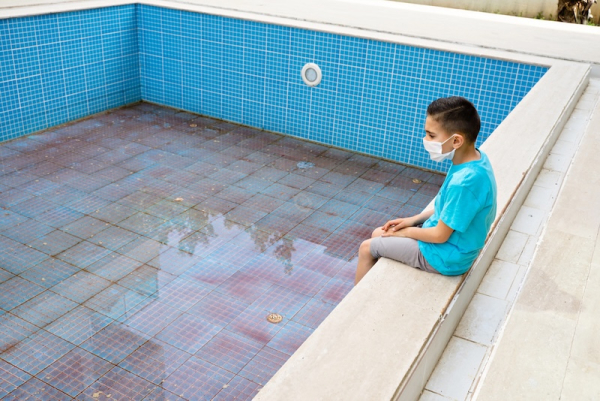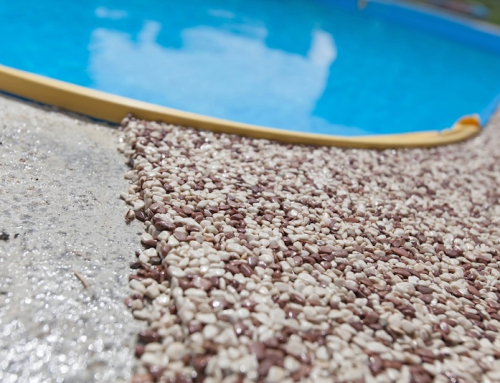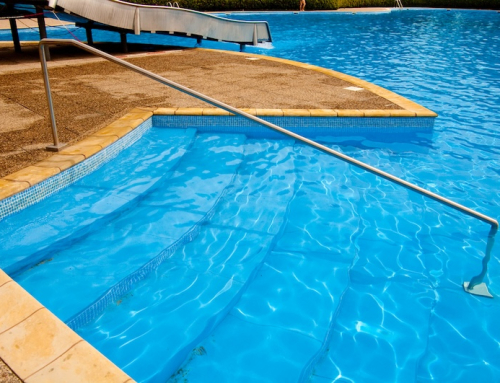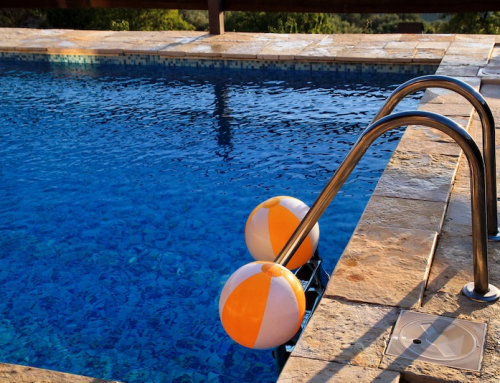Is your pool looking worn, cracked, or faded, leaving you embarrassed or hesitant to entertain guests? You know pool resurfacing will restore its beauty, but the uncertainty of how long the process takes can feel overwhelming, especially when juggling family schedules and events.
Nobody wants their backyard oasis turned into a long-term construction zone. Knowing the exact timeframe is like having a clear road map—it helps you plan ahead, avoid unexpected delays, and schedule confidently around your family’s activities. You deserve clarity—not confusion.
Here’s the straightforward timeline homeowners need, clearly outlining each step from start to finish, so you can comfortably prepare for the project and look forward to diving back into a pristine pool faster and with less stress.
How Long Does the Pool Resurfacing Process Usually Take?
Pool resurfacing generally takes about 1 to 2 weeks from start to finish. However, the exact duration depends on your pool size, the existing pool surface condition, and the type of resurfacing material you choose.
Concrete pools, fiberglass pools, or those with special finishes, such as pebble surfaces, each have slightly different timelines. Typically, the project involves multiple stages, from draining the pool water and preparing the old surface to carefully applying your new pool finish.
Knowing the timeframe helps you coordinate schedules, minimize disruption, and communicate with the experienced professionals handling your resurfacing project.
Now, let’s walk through each resurfacing step so you’re fully prepared for what’s ahead.
Step-by-Step Pool Resurfacing Timeline
Step 1: Initial Inspection & Planning
Typical duration: 1–2 days
The pool resurfacing process starts with a careful inspection. Experienced professionals evaluate your swimming pool’s condition, examining the existing surface, pool deck, waterline tile, and pool shell. They’ll measure pool size to determine the exact amount of resurfacing material needed. During this phase, you’ll choose your new pool finish from available pool resurfacing options such as plaster, quartz, or pebble surfaces. Precise planning at this stage helps prevent costly repairs later and ensures your project runs smoothly.
Step 2: Draining the Pool
Typical duration: 1–2 days
Draining the entire pool is essential. It allows professionals to thoroughly inspect and address any hidden structural cracks, rust stains, or loose plaster beneath the pool water. Proper draining ensures the existing pool surface is fully accessible and ready for surface preparation. Pool owners should remove any furniture or items near the pool area during this step.
Step 3: Surface Preparation & Repairs
Typical duration: 1–2 days
Properly preparing the pool’s surface is critical to your resurfacing project. Professionals clean the entire surface, removing dirt, algae growth, and harsh chemicals. They’ll patch cracks, smooth rough spots, and perform an acid wash if necessary. A properly prepared surface ensures your new pool finish bonds strongly and lasts longer, even in harsh weather conditions.
Step 4: Applying the New Surface
Typical duration: 1–3 days
Your chosen resurfacing material—whether white plaster, pebble tec, fiberglass, or glass beads—is applied by skilled technicians. This labor-intensive process ensures a smooth texture and luxurious finish. Many pool professionals recommend pebble surfaces or quartz for increased durability.
Step 5: Curing and Refilling
Typical duration: 3–5 days
The final step involves carefully curing your pool’s surface. Proper curing is crucial for longevity, as it prevents issues caused by extreme temperatures or improper water chemistry. After curing, the pool is refilled and chemically balanced, ready for swimming.
When Can You Swim After Pool Resurfacing?

You may wonder, “Can I swim right after resurfacing my pool?” The short answer is no. After pool resurfacing, most pool professionals recommend waiting about one week before jumping back into your swimming pool. This waiting period allows the pool plaster or other resurfacing materials to fully cure.
Proper curing ensures your new pool surface remains durable and smooth. Swimming too soon can damage the finish or irritate your skin due to chemicals. Waiting a few extra days keeps your pool looking great and safe for your family.
What Factors Might Extend Your Timeline?
Although the average timeline for resurfacing a pool is 1 to 2 weeks, certain factors can lengthen your project’s duration. Pool size, complexity, and your choice of resurfacing material all play a role. Additionally, weather conditions can impact the process. For instance, fiberglass pool resurfacing might cure faster than traditional plaster, but heavy rain can still delay the schedule.
Here’s a clear overview of what could extend your timeline:
|
Factor |
How it affects the timeline |
|---|---|
|
Pool Size |
Larger pools naturally take longer per square foot, increasing total project time. |
|
Pool Complexity |
Pools with unique shapes or additional features, like spa areas, may require extra time. |
|
Chosen Materials |
Some materials cure faster (fiberglass pools), while others, like pool plaster or pebble finishes, may require longer curing times. |
|
Weather Conditions |
Rainy seasons, humidity, or cooler temperatures can significantly slow drying and curing times. |
Being aware of these factors helps most pool owners set realistic expectations and effectively plan their pool remodeling schedule.
Pro Tips to Keep Your Project on Schedule
To make your pool resurfacing project go smoothly, preparation and communication are key. When you clearly understand what’s involved, you’re less likely to face unexpected delays or costs. Good planning helps ensure your swimming pool resurfacing finishes on time.
Here are practical ways you can help keep the process running efficiently:
- Plan ahead: Clear the pool deck and surrounding areas before the crew arrives to start pool resurfacing. Removing patio furniture, plants, or toys avoids delays.
- Ask questions early: Discuss your concerns or special requests upfront rather than halfway through the project. Early adjustments keep everyone on track.
- Set clear expectations: Talk with your pool contractor about the schedule, daily start times, and projected milestones so you always know what’s happening next.
- Be reachable: Make sure your contractor has your current contact details. Being easily available can resolve potential issues quickly.
Open and consistent communication builds trust and helps your resurfacing project run smoothly from start to finish.
Wrapping Up Your Pool Resurfacing Project
Overall, pool resurfacing typically takes about 1 to 2 weeks, depending on your pool’s size and condition. By understanding the timeline and staying involved, you avoid common pitfalls and enjoy fewer disruptions. Clear communication and careful planning make your resurfacing project stress-free.
To ensure the highest quality results, always choose skilled professionals who specialize in swimming pool resurfacing. Experts like Creative Resurfacing Solutions have the experience, proper materials, and equipment to handle everything from pool resurfacing to pool deck resurfacing safely and efficiently.
Working with professionals means you can confidently relax, knowing your pool will look stunning and last for years.
Frequently Asked Questions
How long does pool resurfacing usually take?
Pool resurfacing typically takes about 1 to 2 weeks. The exact timeline varies based on pool size, condition, and materials chosen, but most residential projects finish within this timeframe.
Do you need to drain a pool for resurfacing?
Yes, draining the entire pool is essential before resurfacing. Removing water allows professionals to properly inspect, clean, and repair the pool’s surface thoroughly for a lasting result.
Can you swim immediately after the pool resurfacing?
No, you should wait around one week after the pool resurfacing. This waiting period ensures the new surface cures properly, protecting it from damage and making it safe for swimmers.
What can delay a pool resurfacing project?
Weather conditions, pool complexity, size, and selected materials can delay resurfacing. For example, rain or cool temperatures slow curing, while larger or uniquely shaped pools need extra preparation time.
How can homeowners help keep pool resurfacing on schedule?
Homeowners can prepare the pool area in advance, communicate clearly and often with the contractor, and be reachable throughout the project. These steps help prevent delays and keep everything running smoothly.






